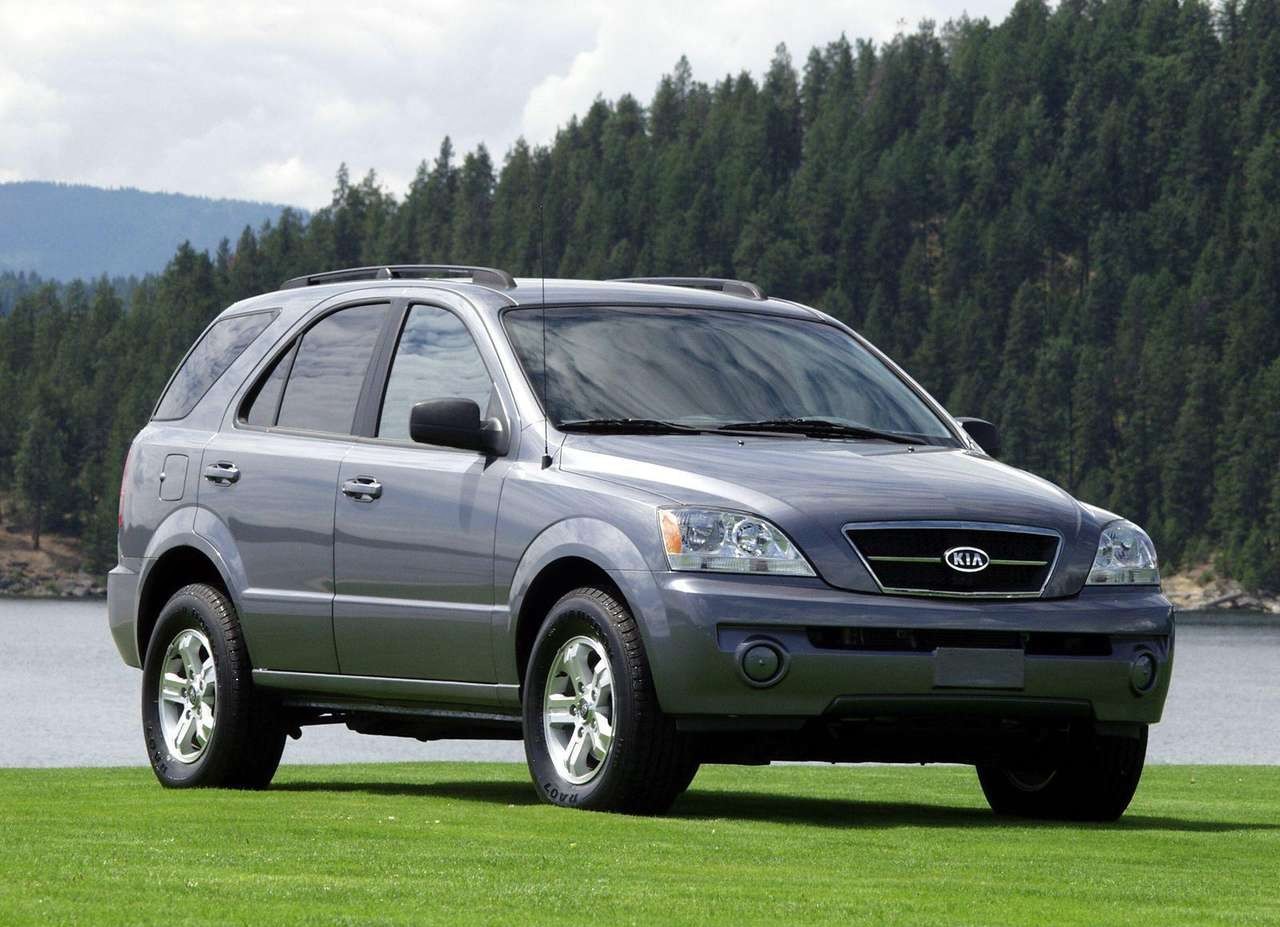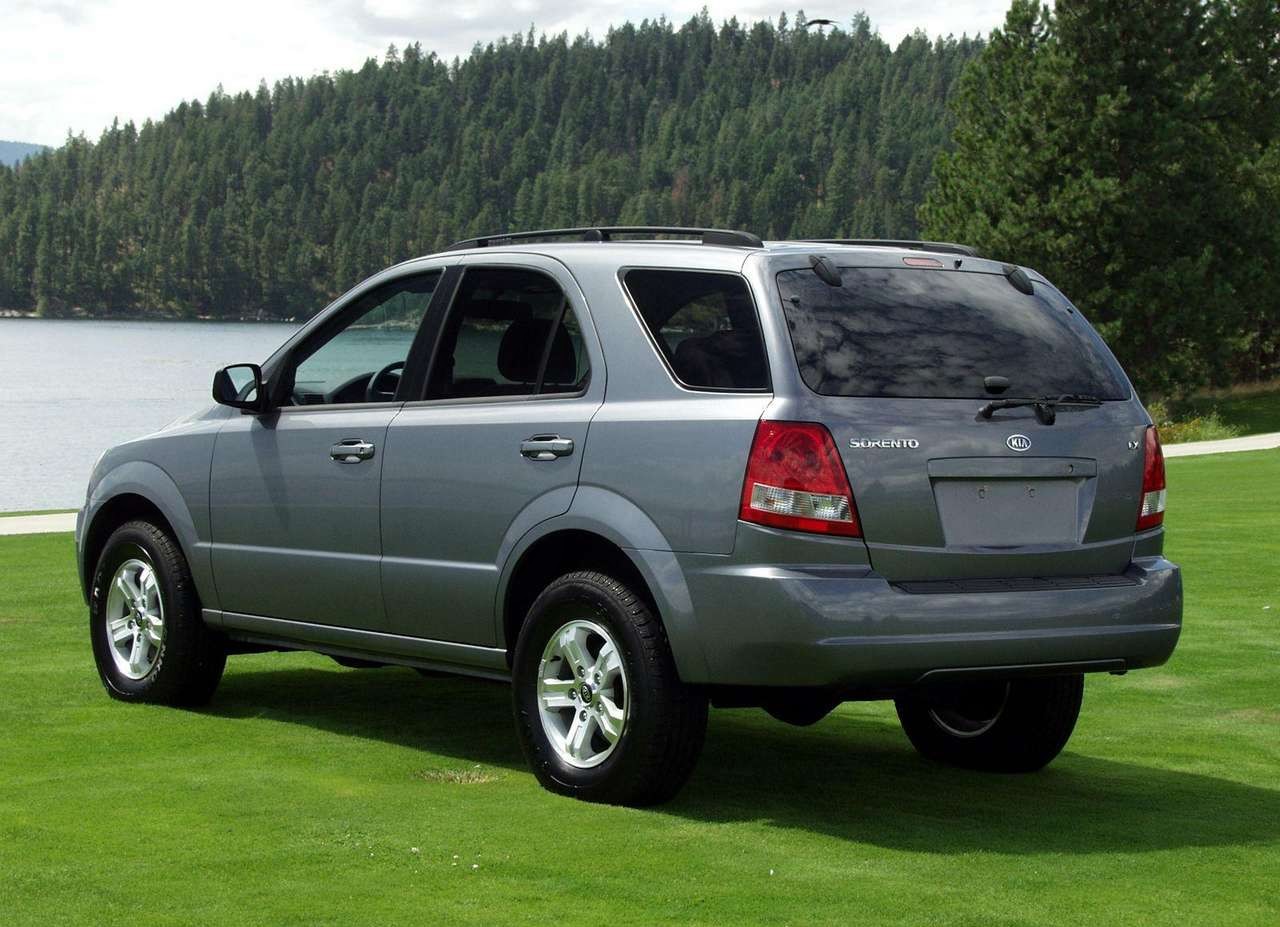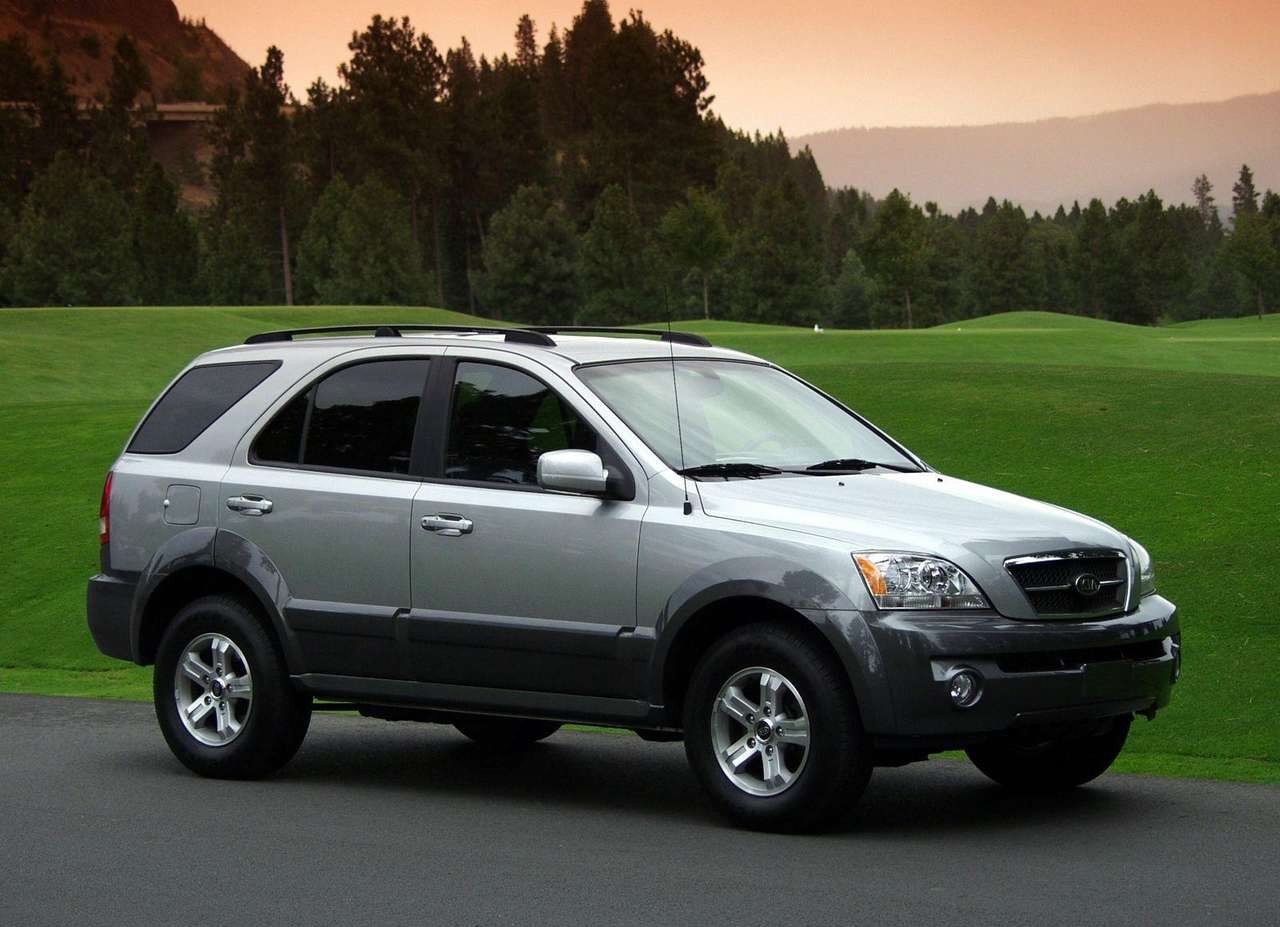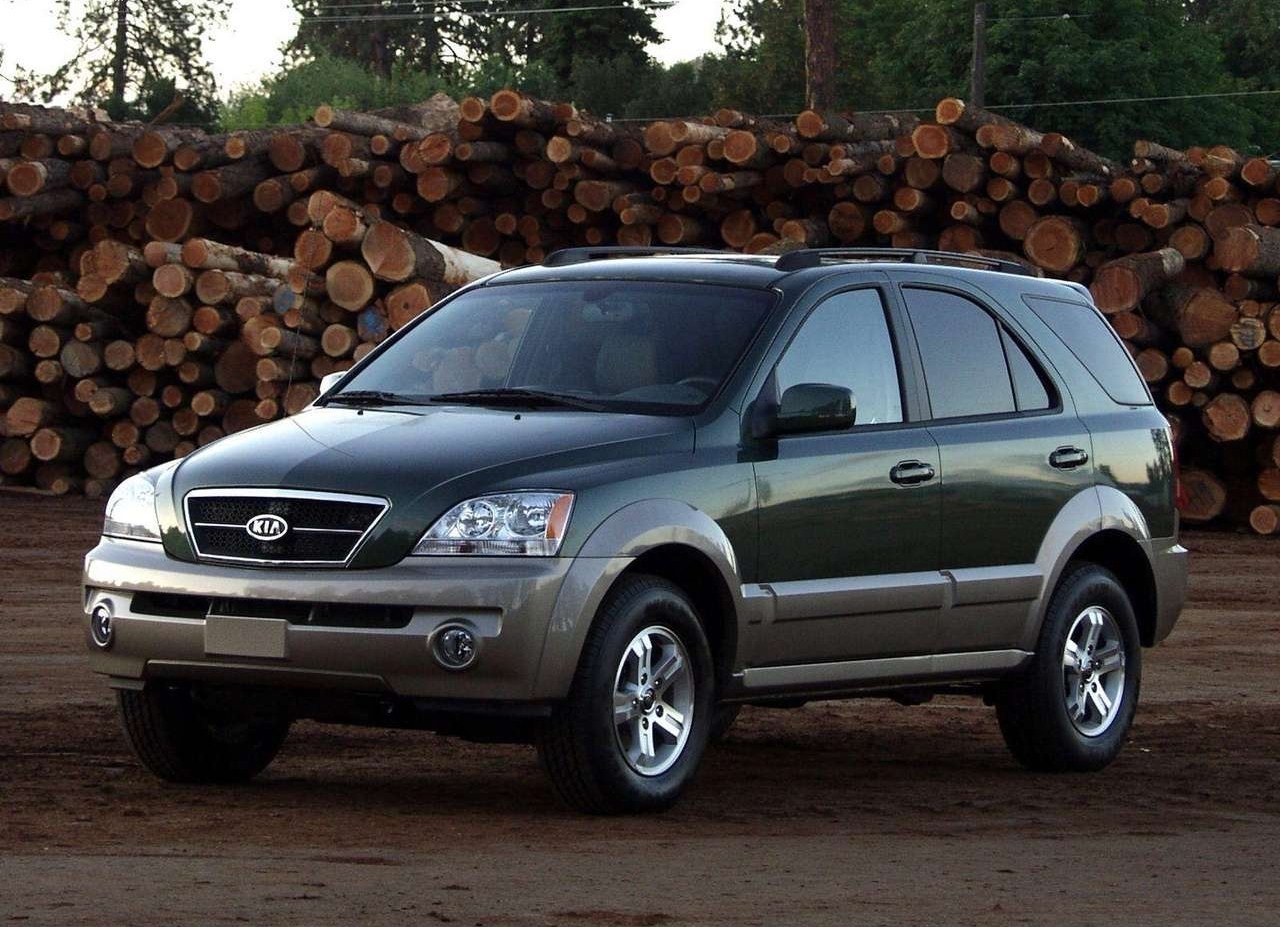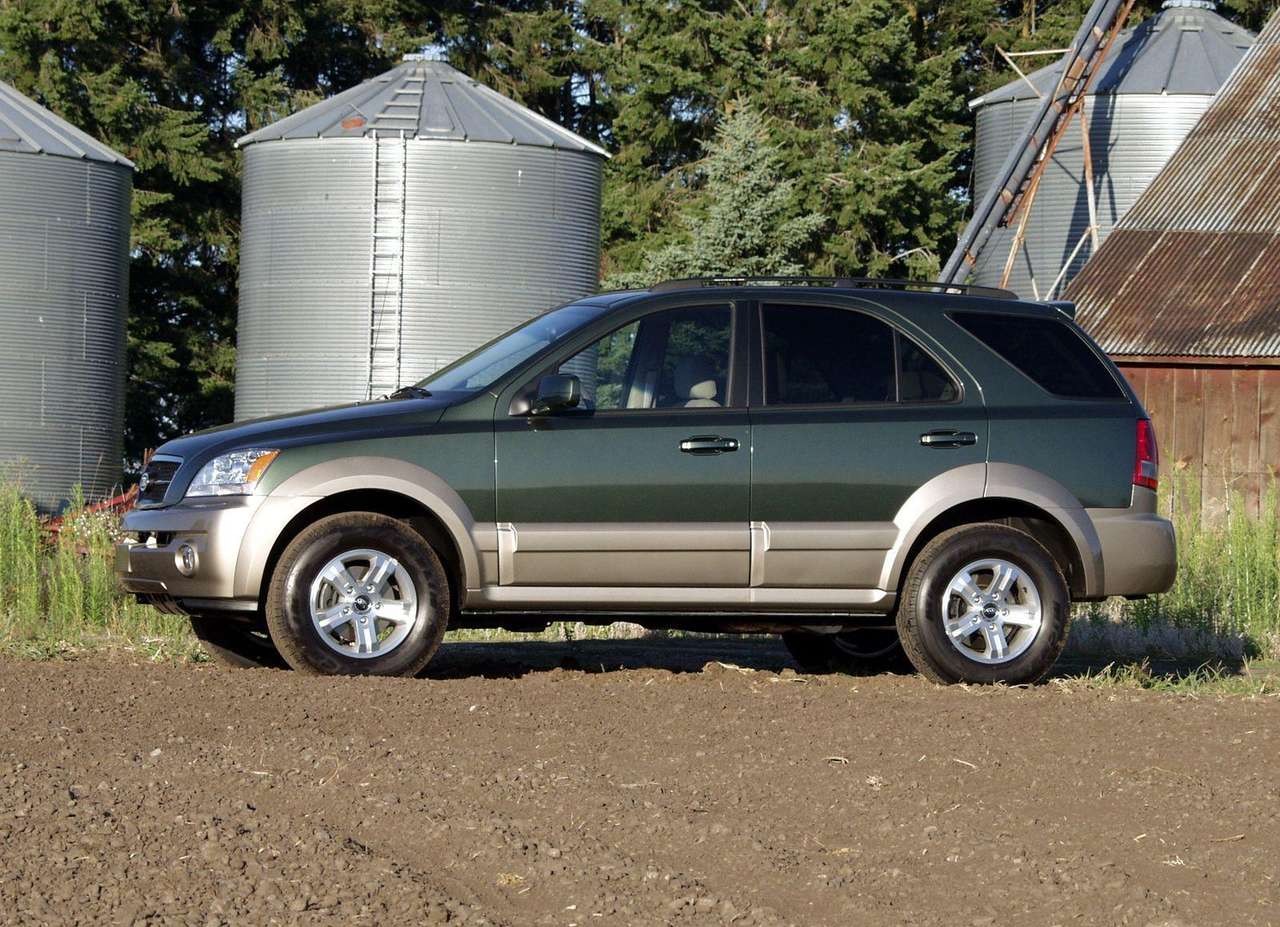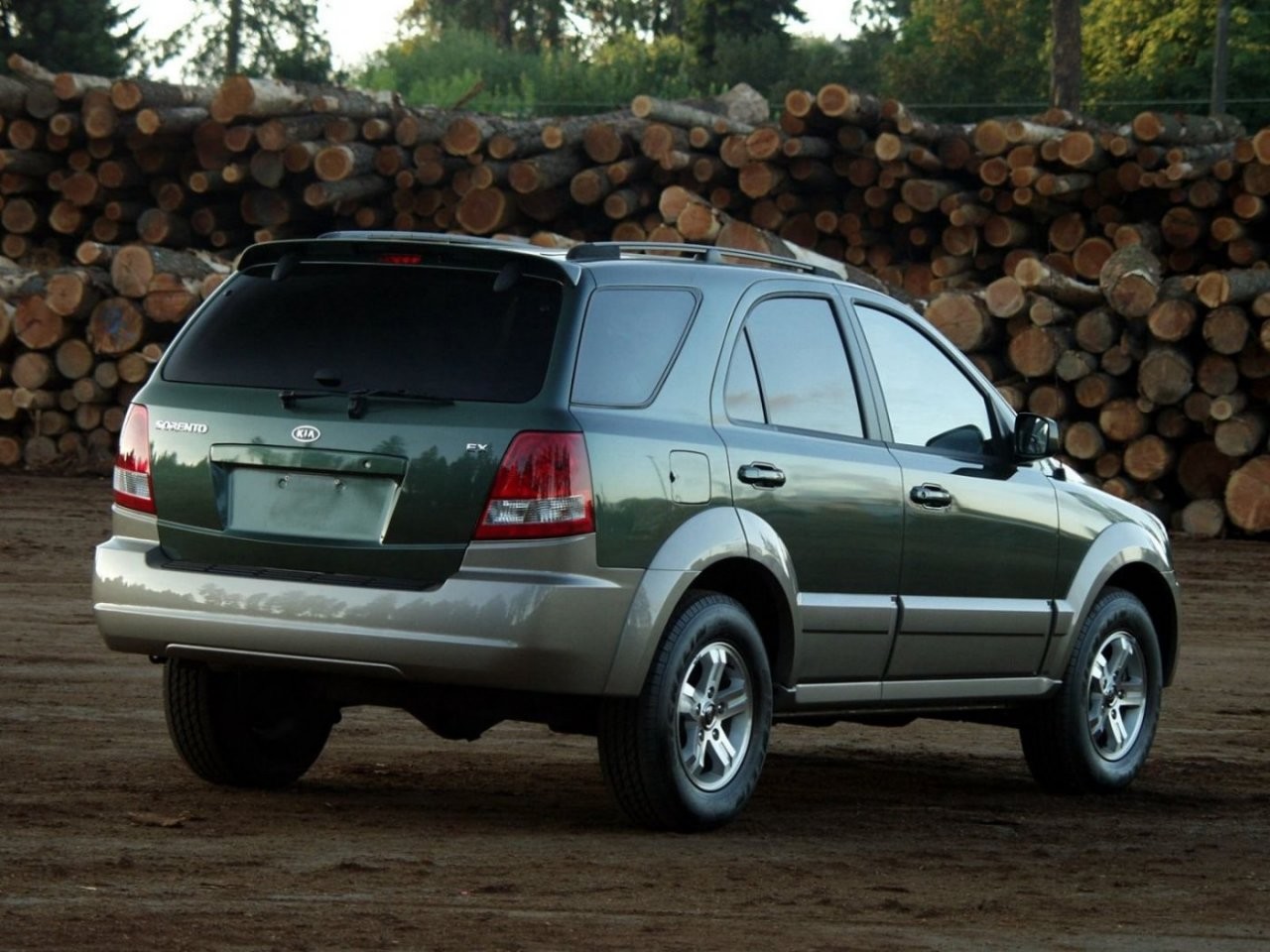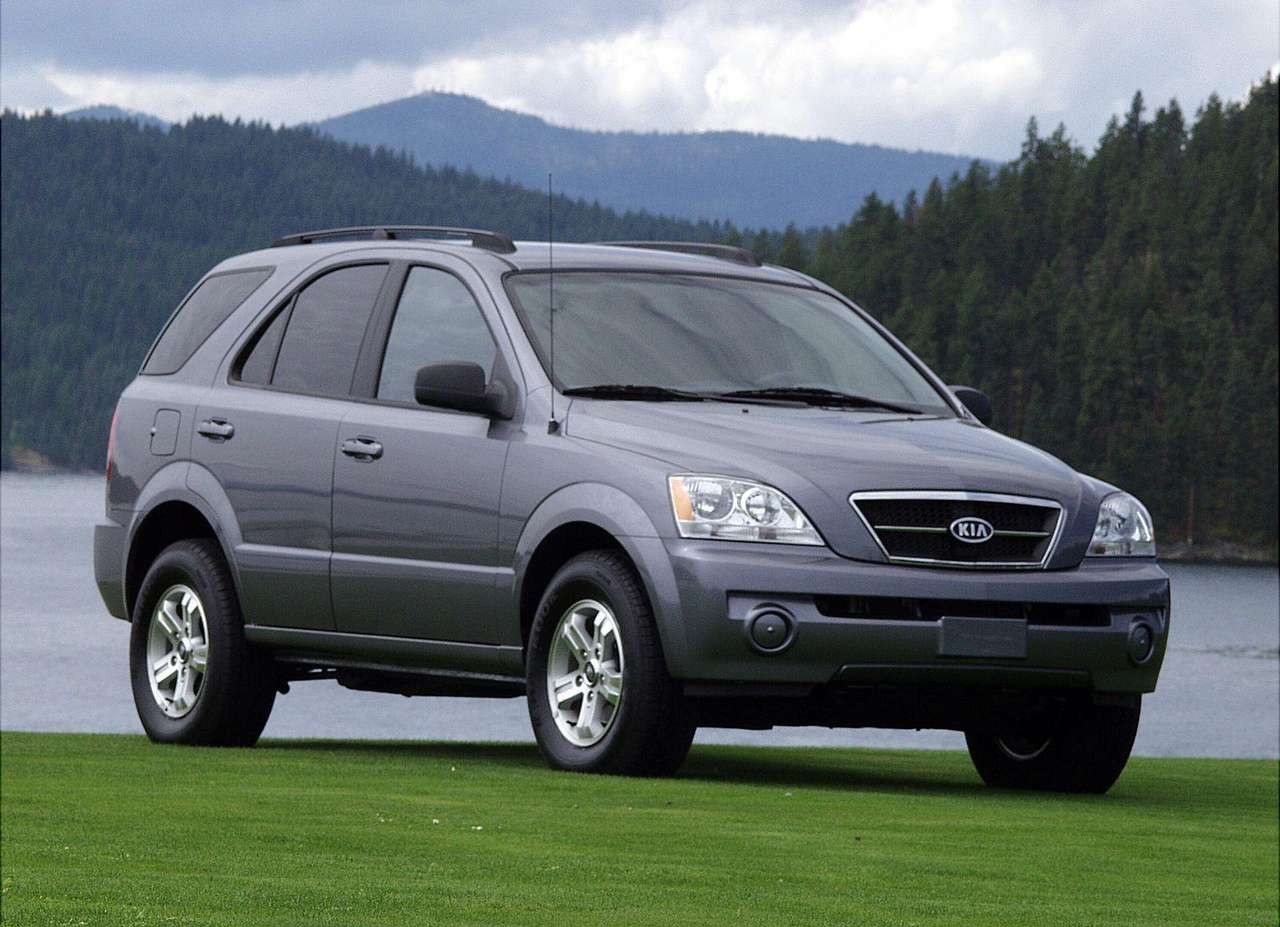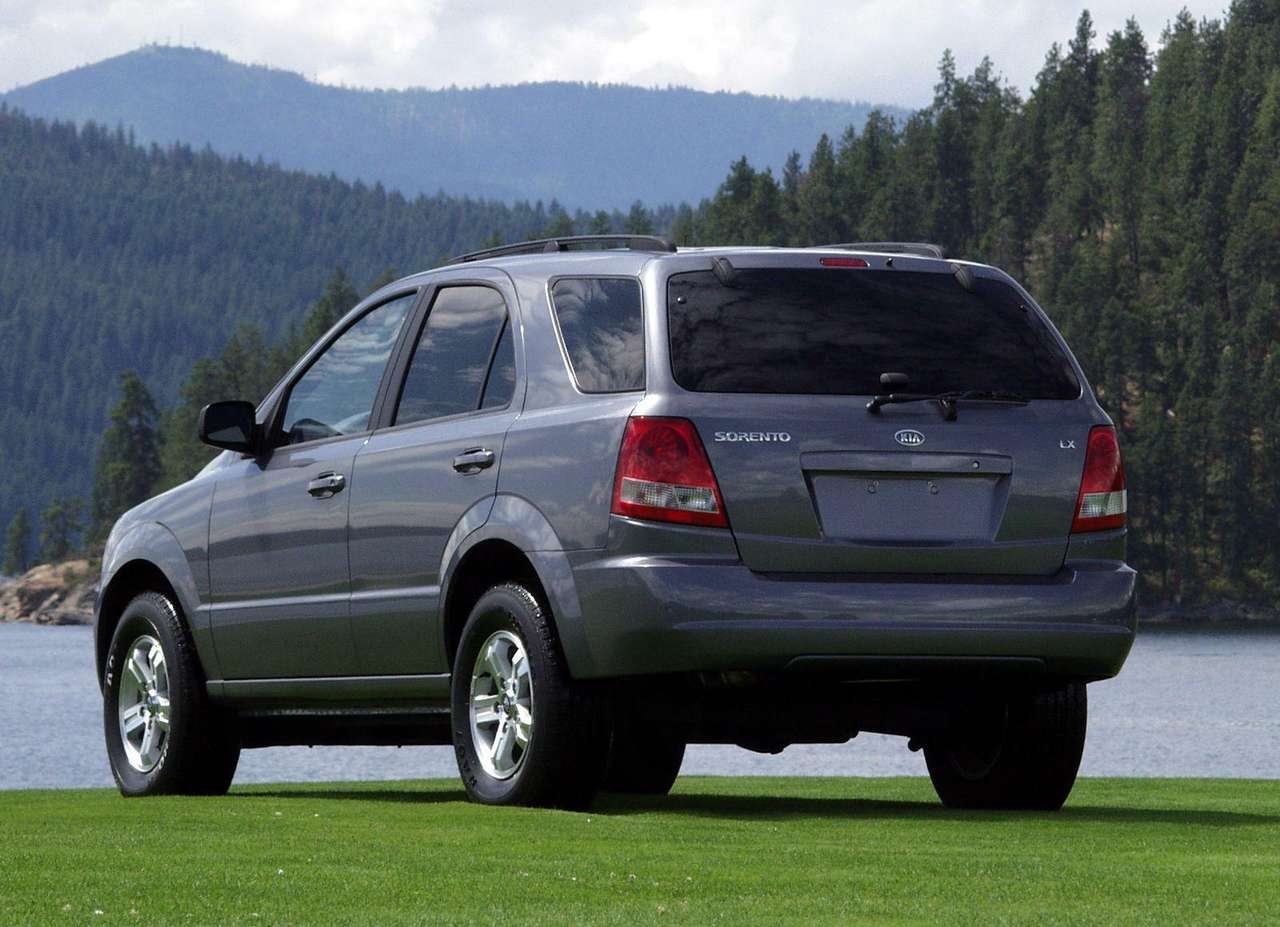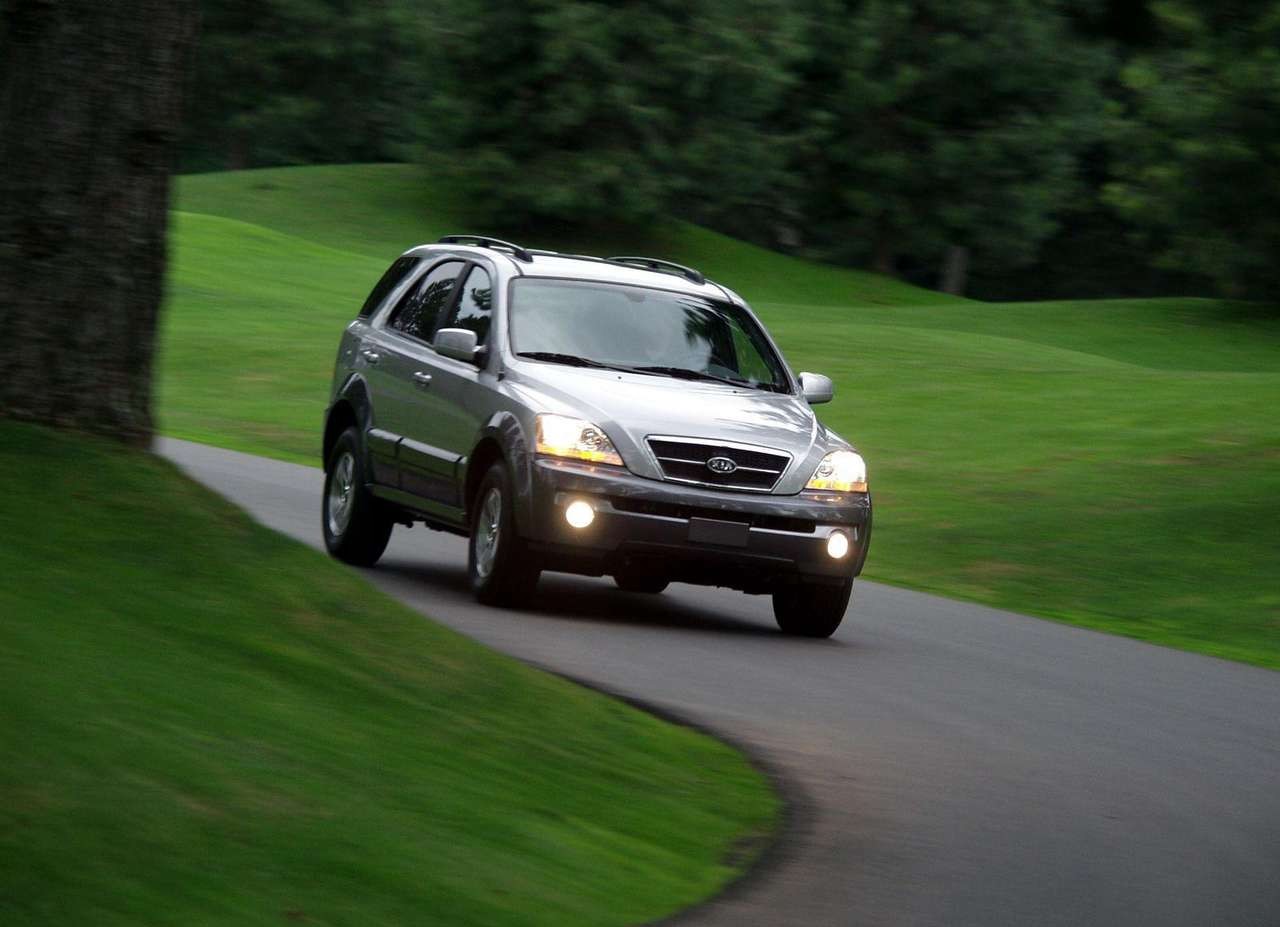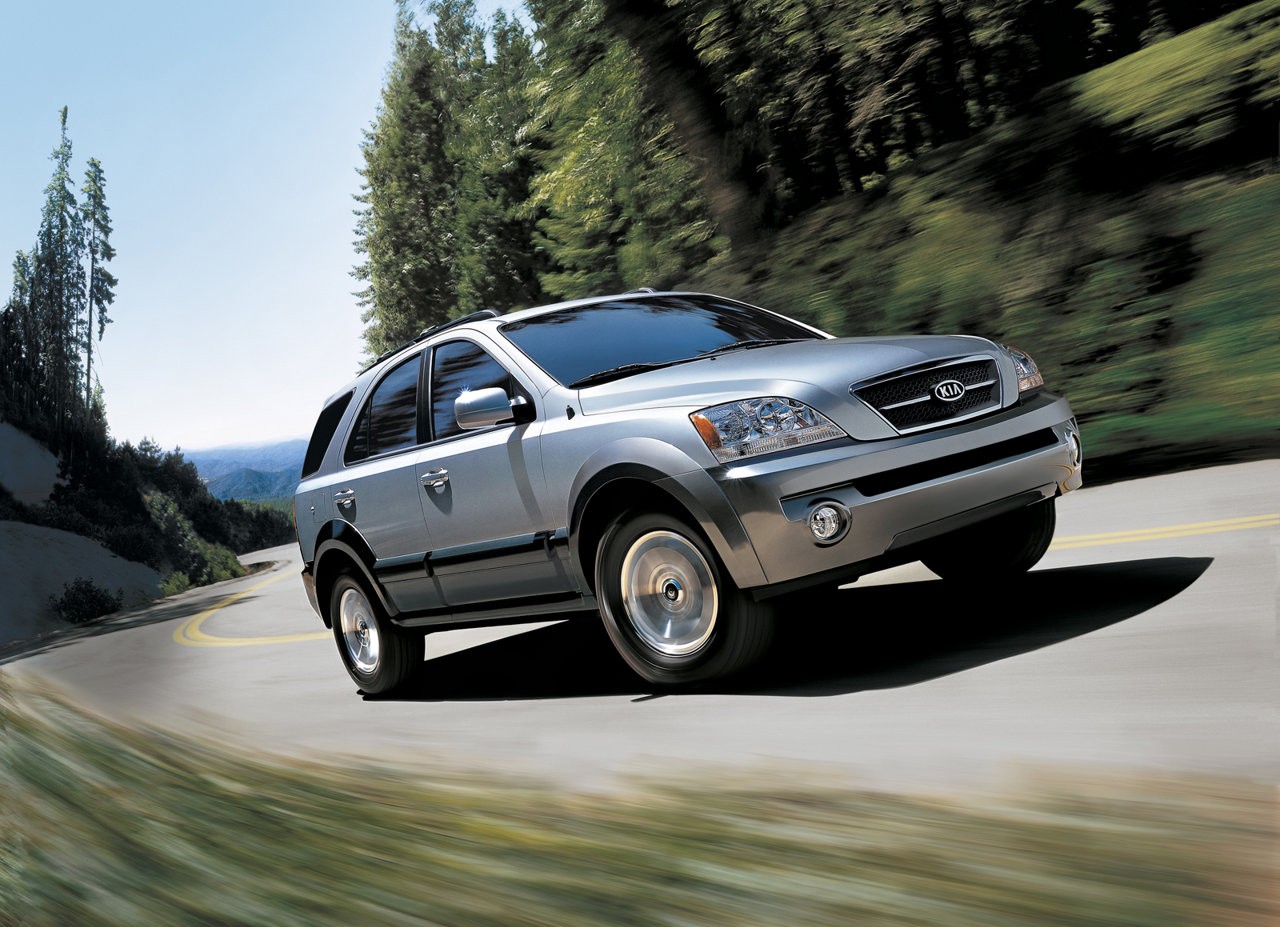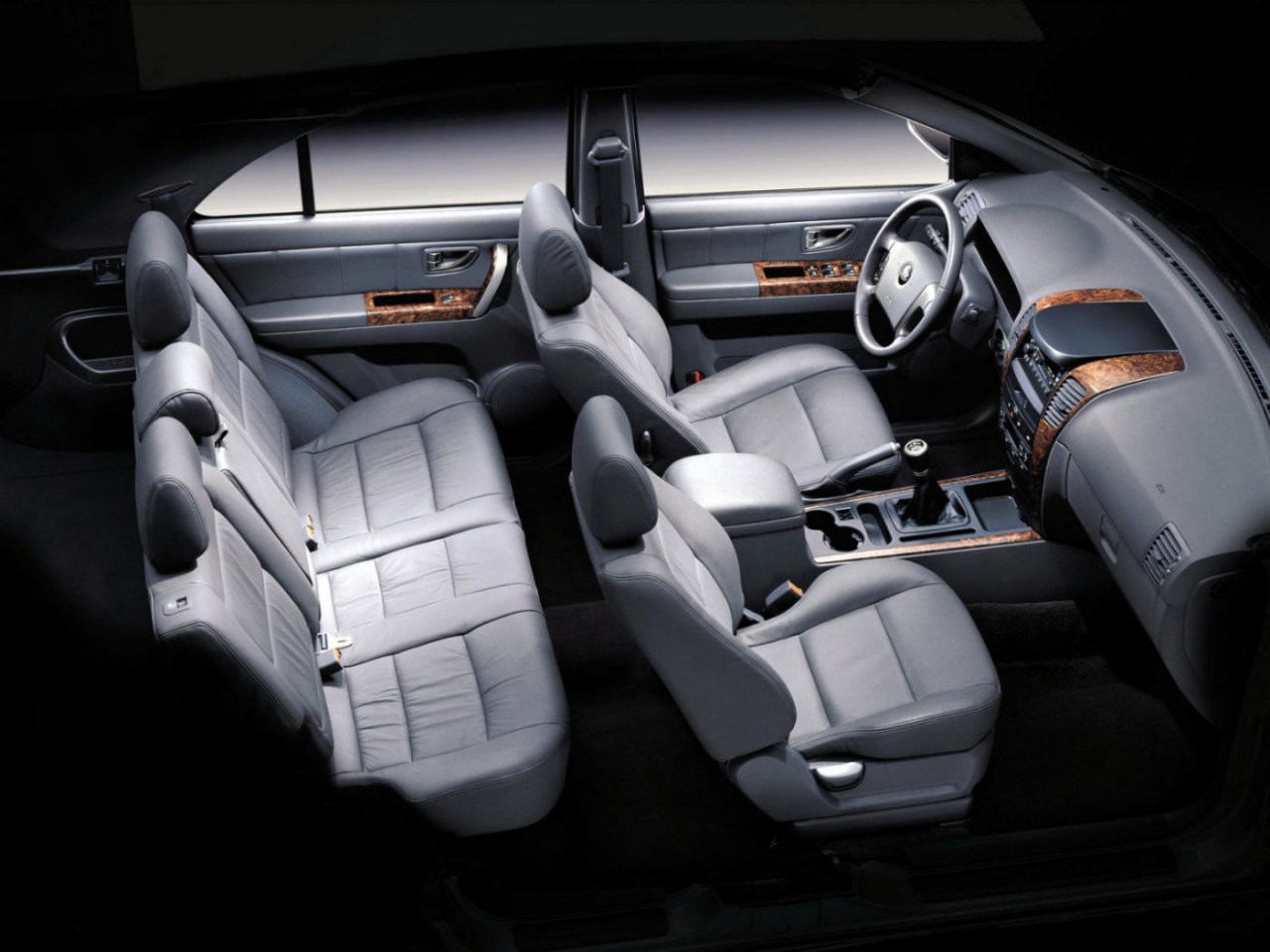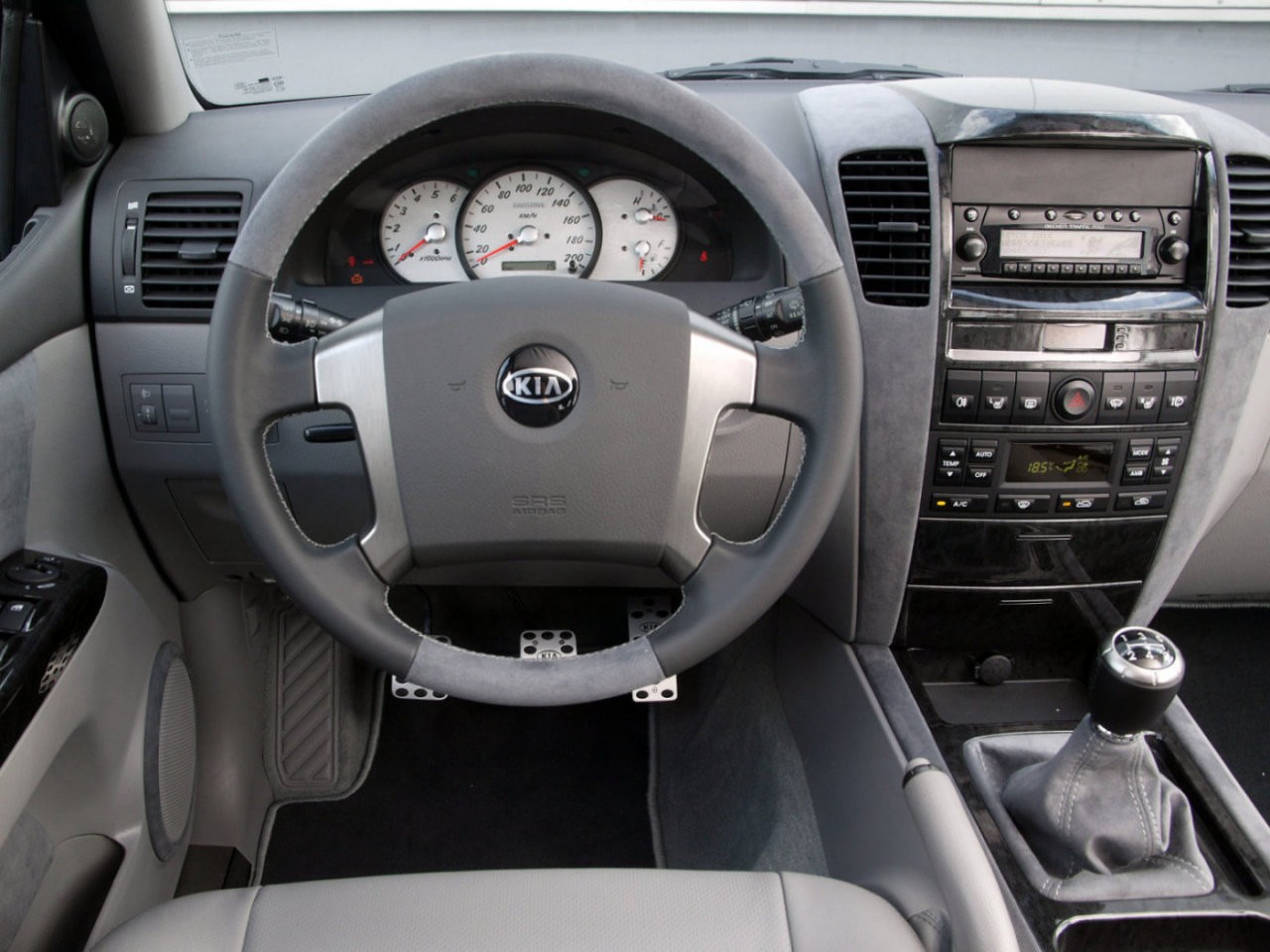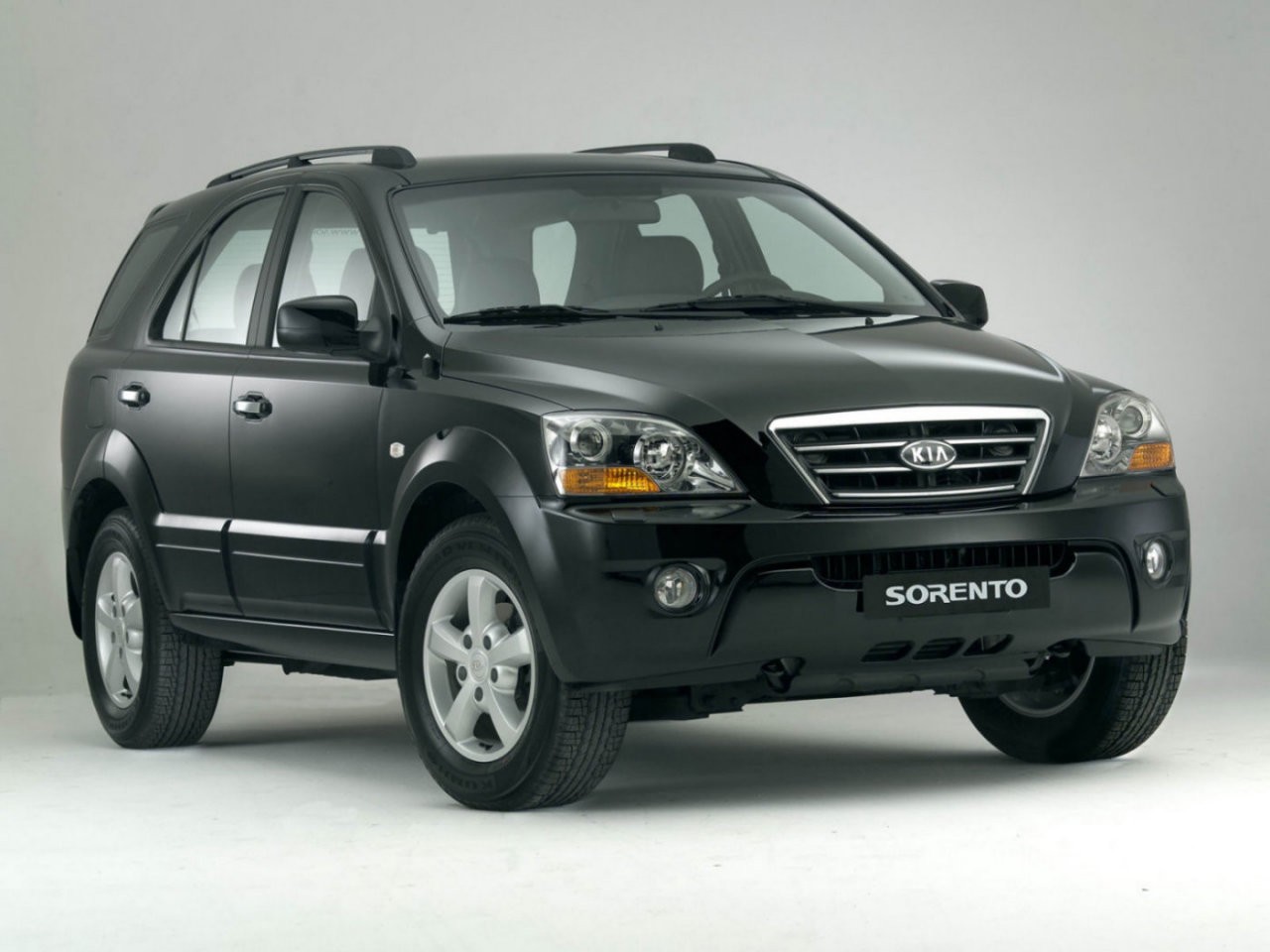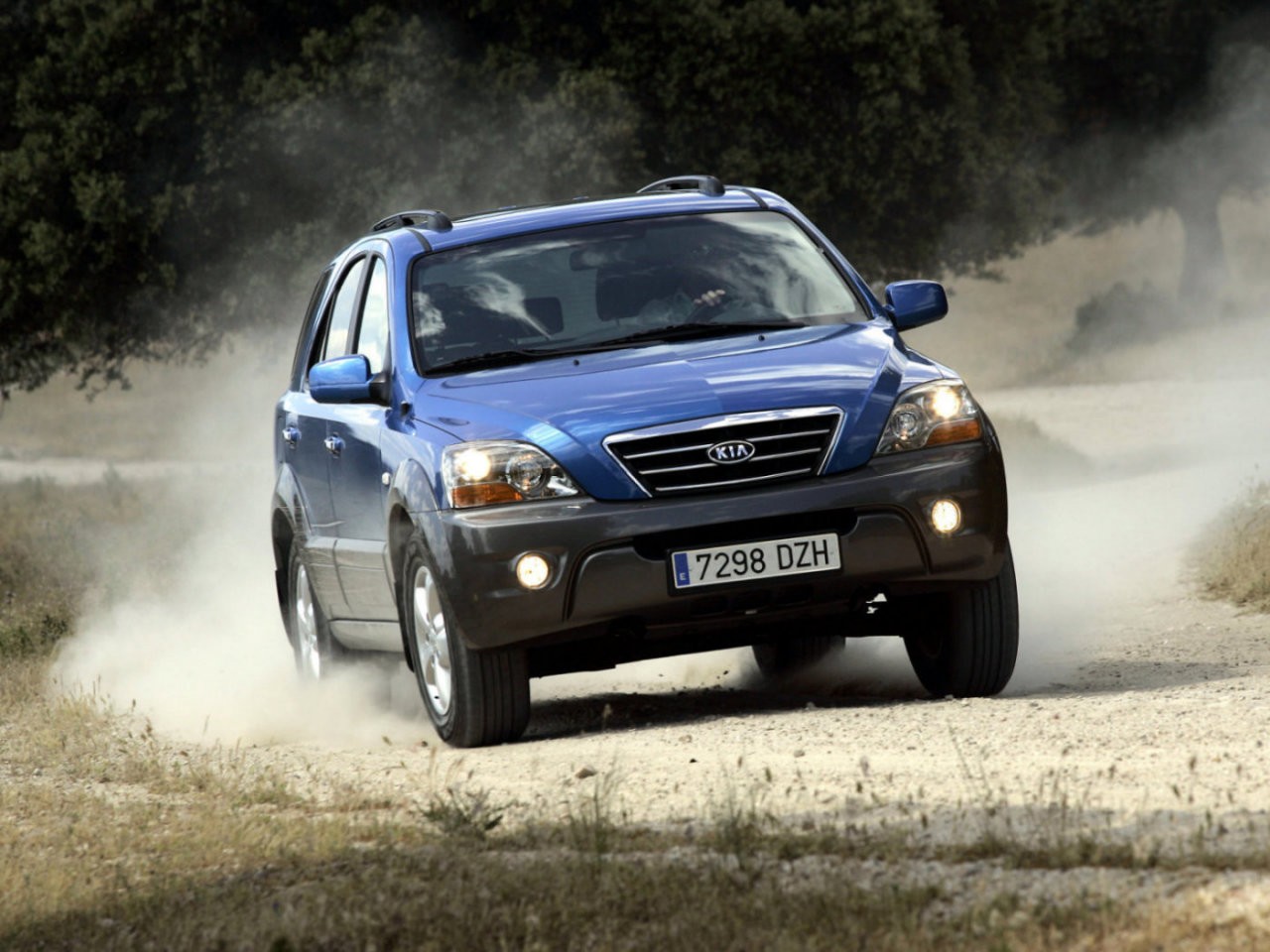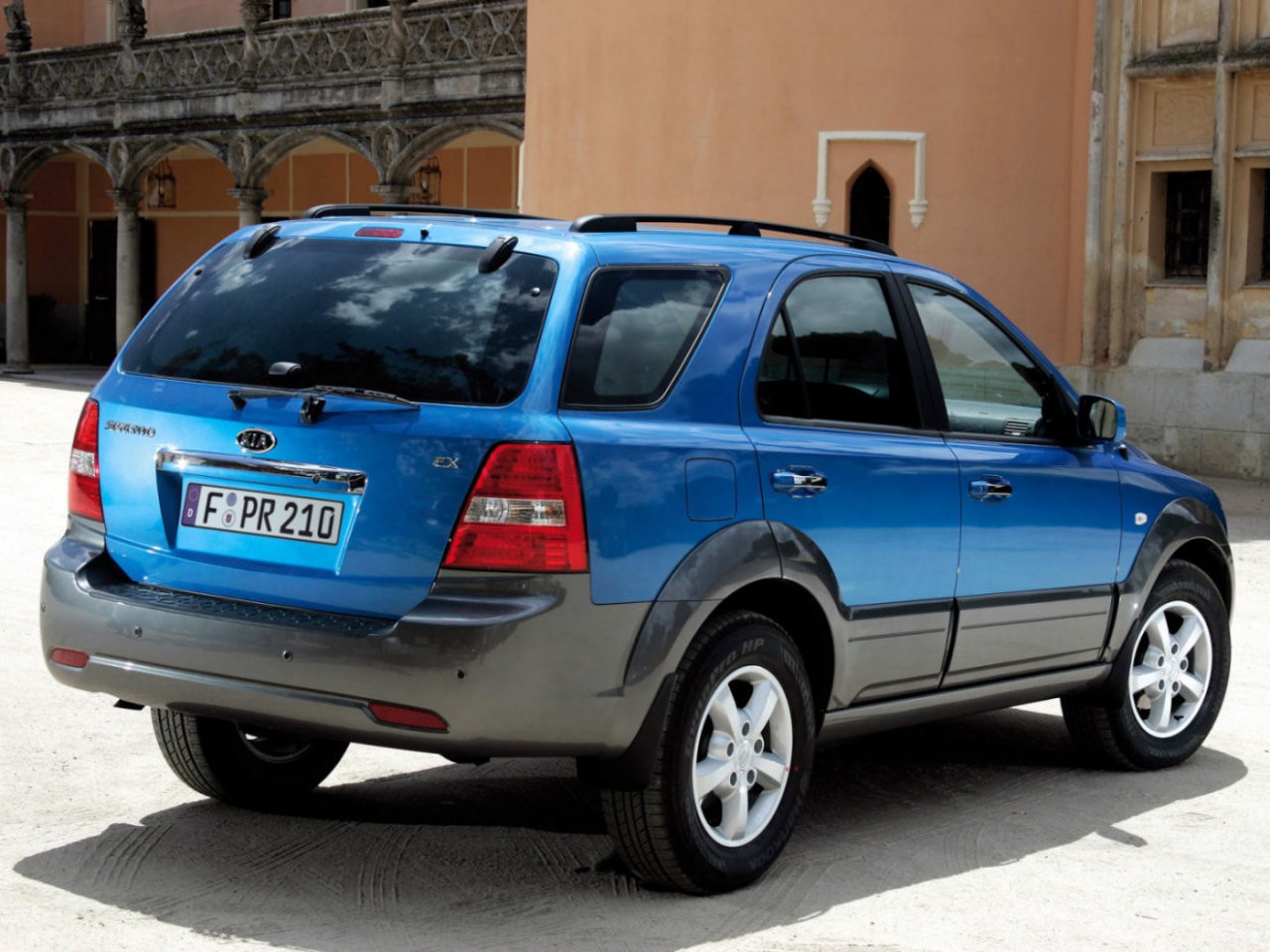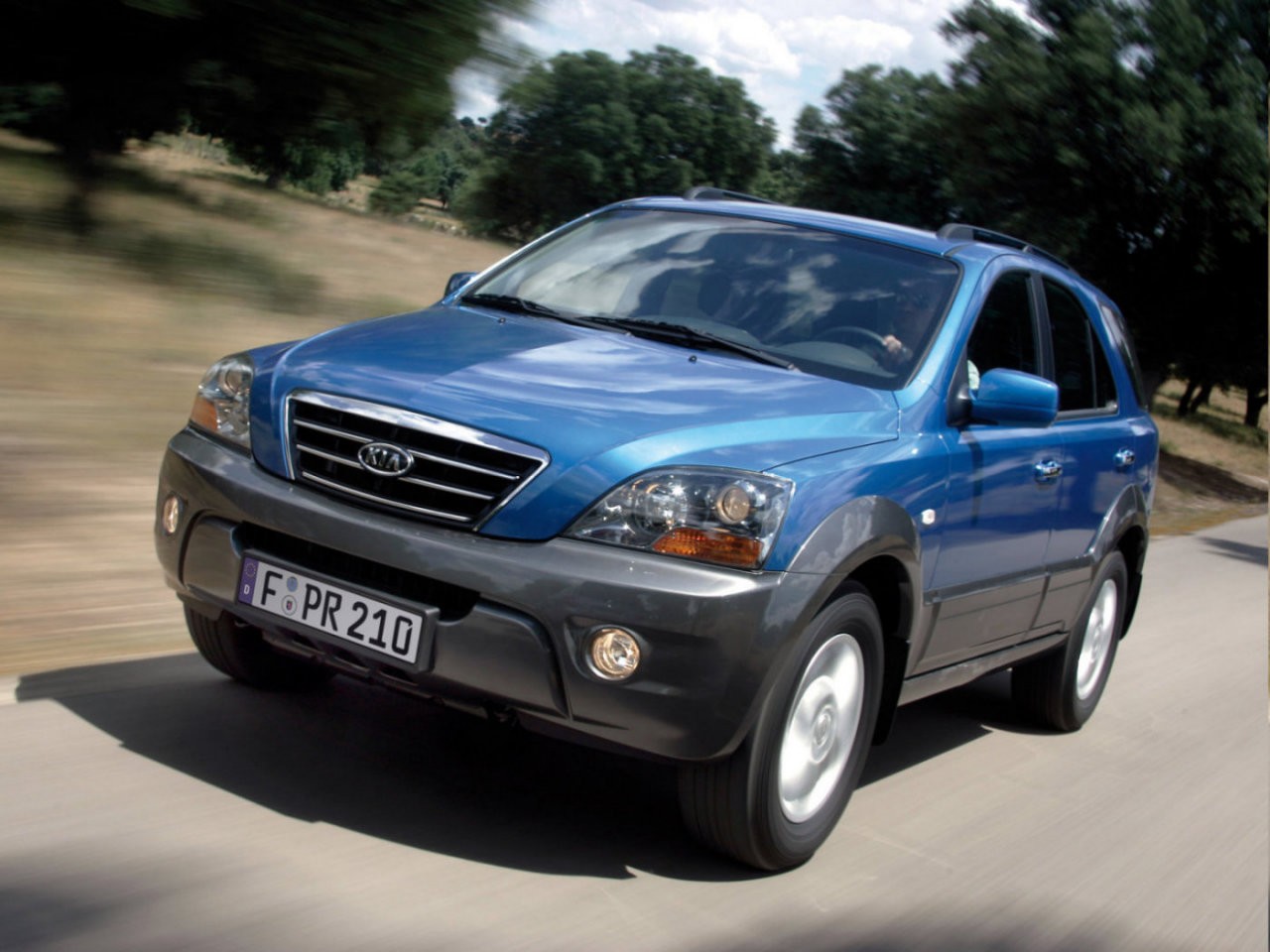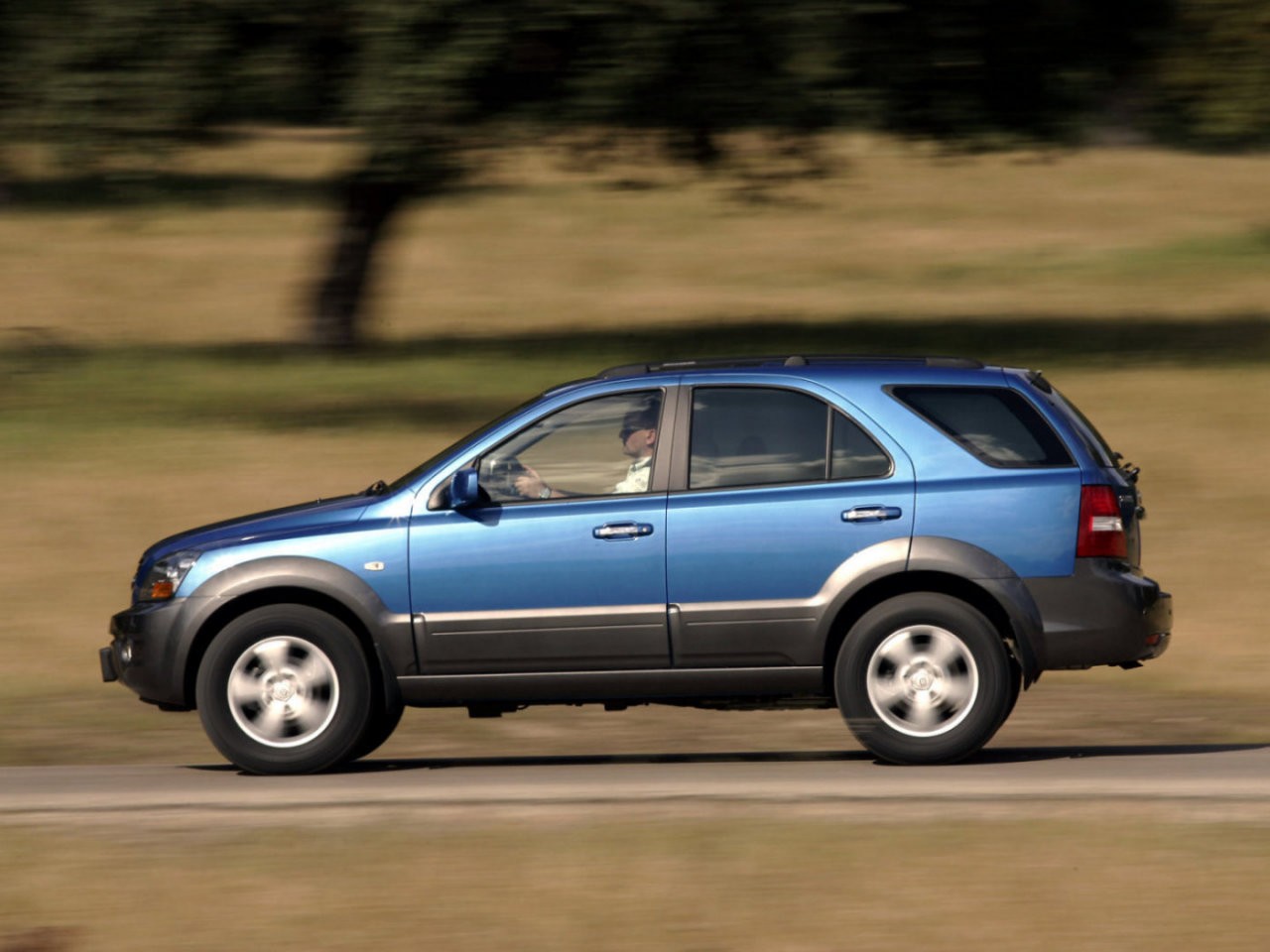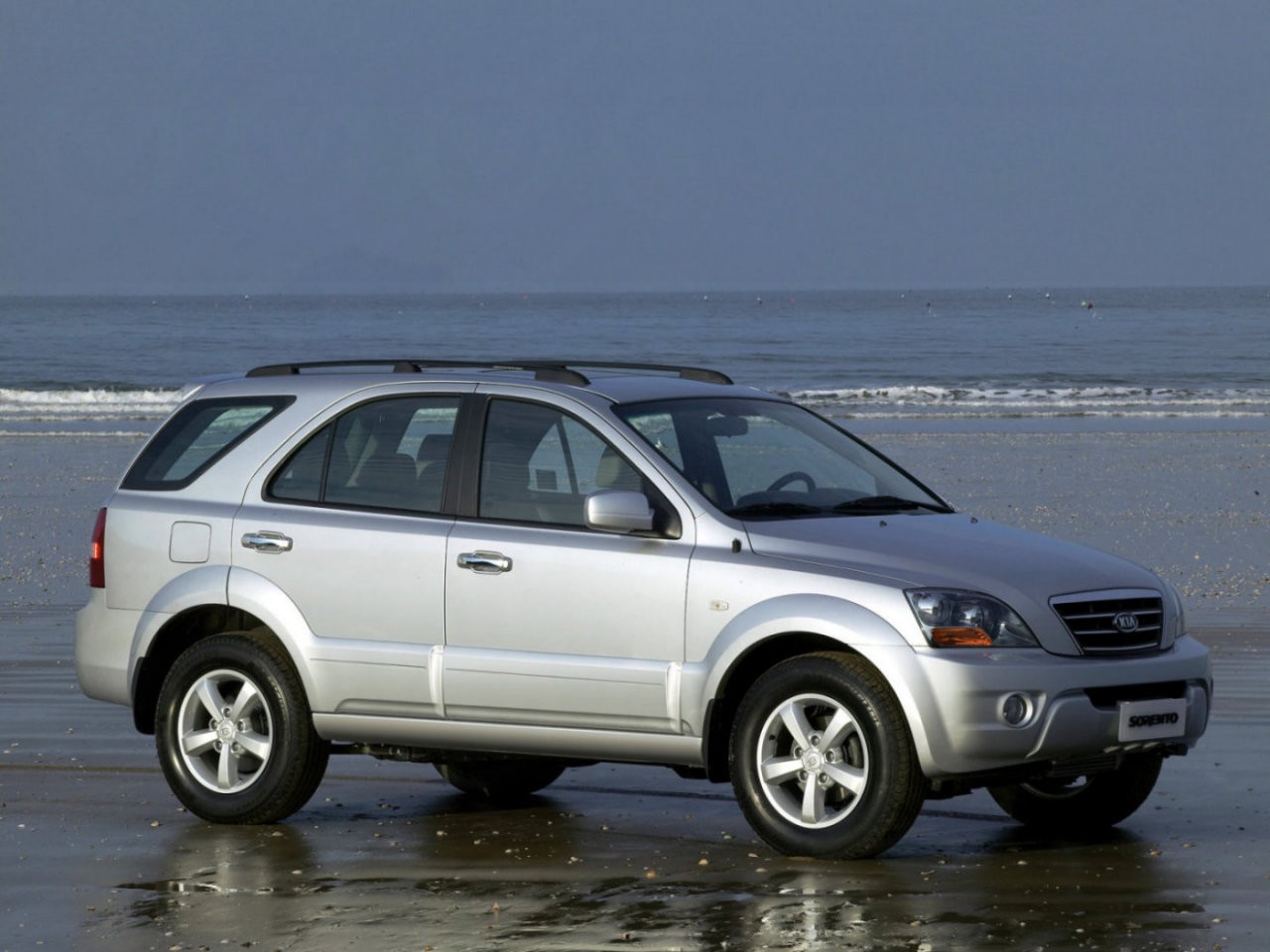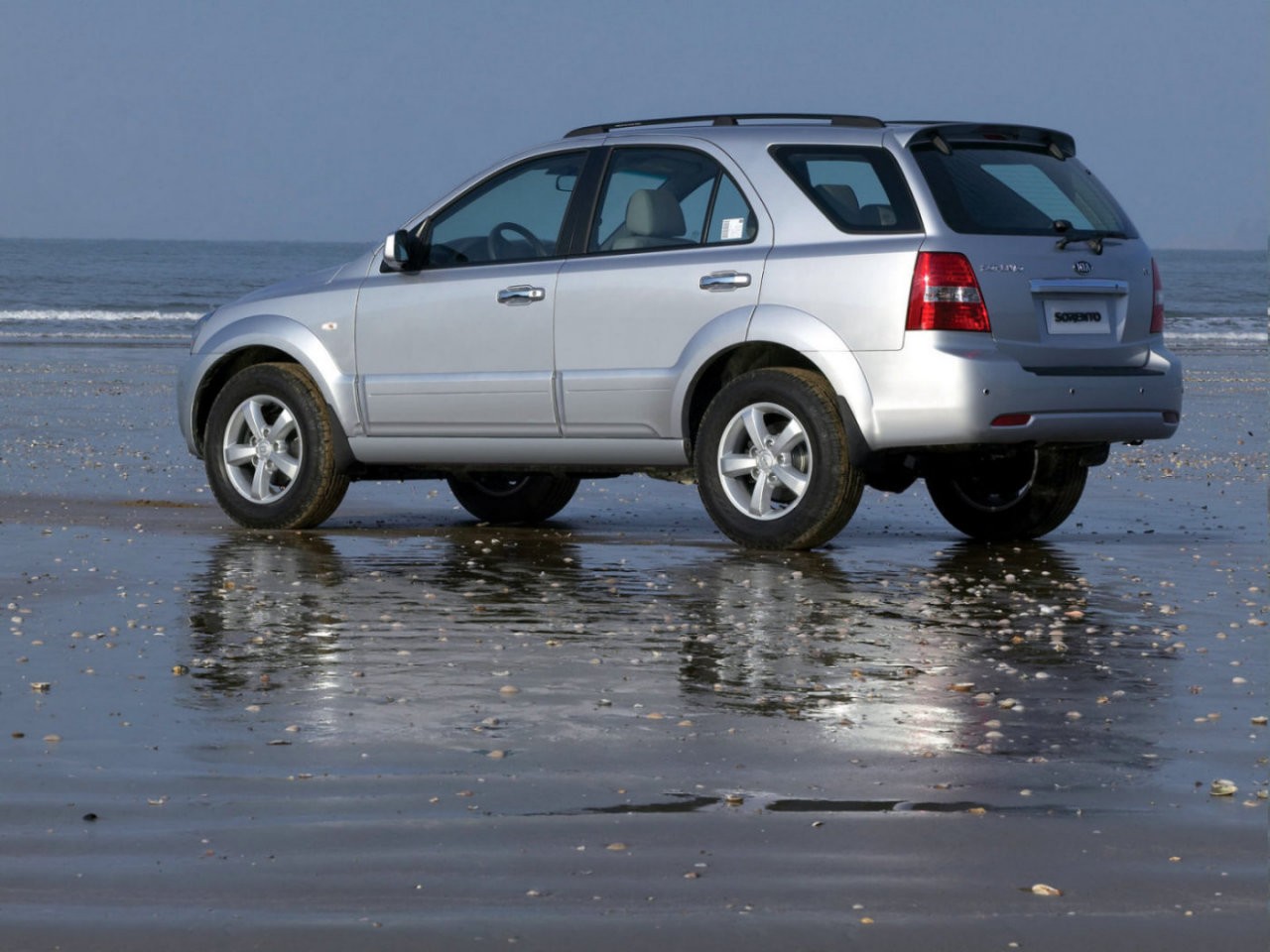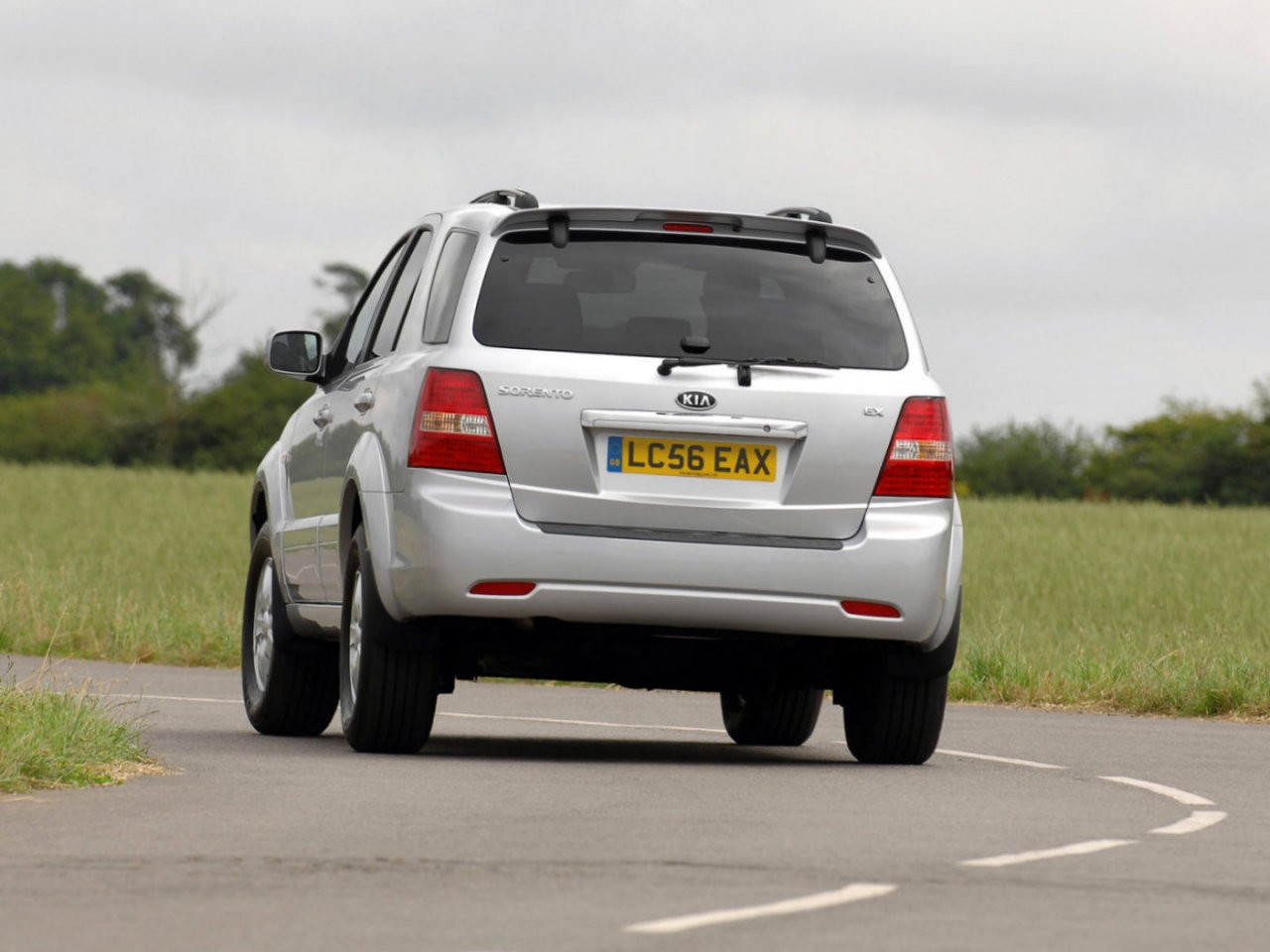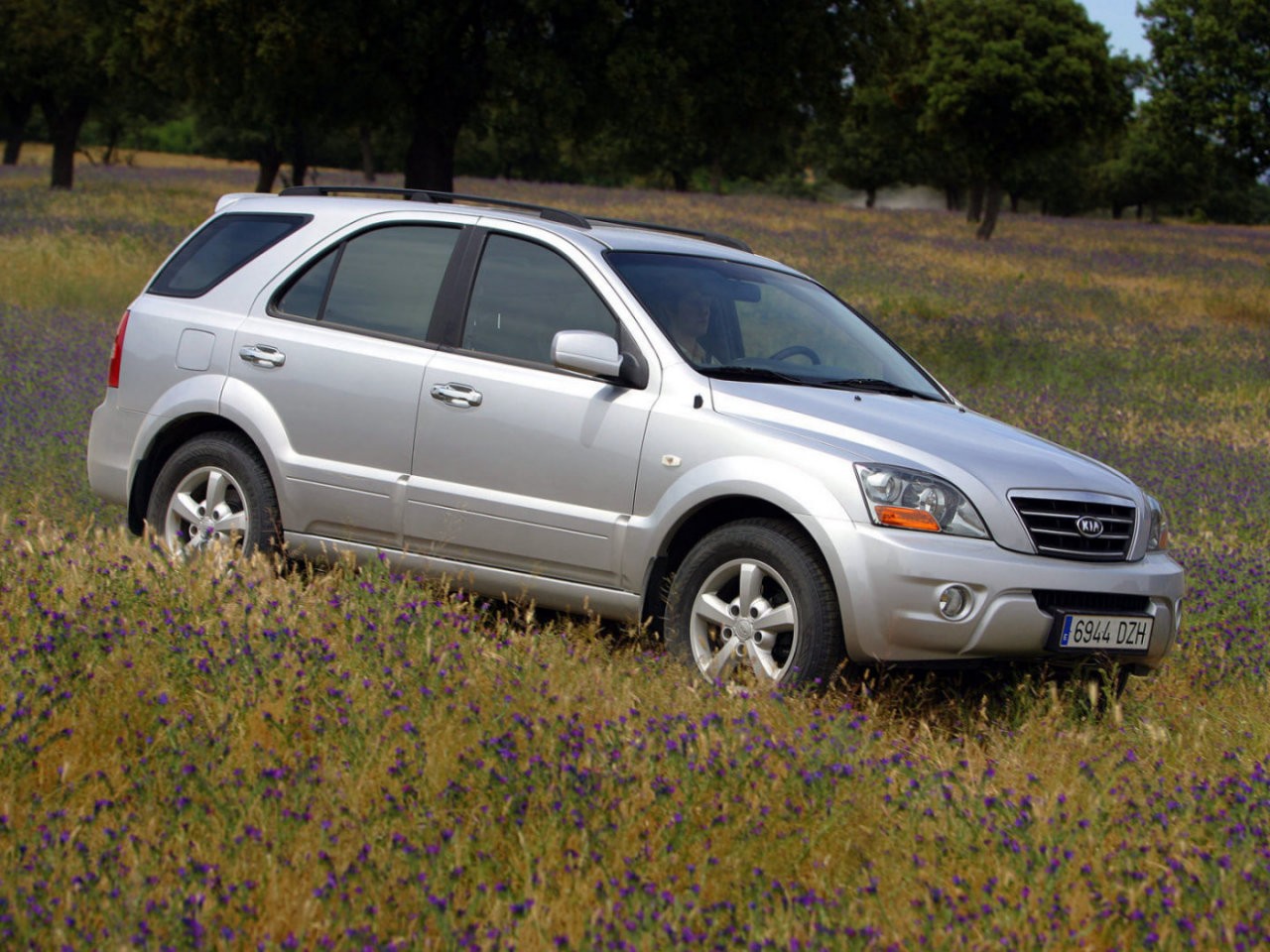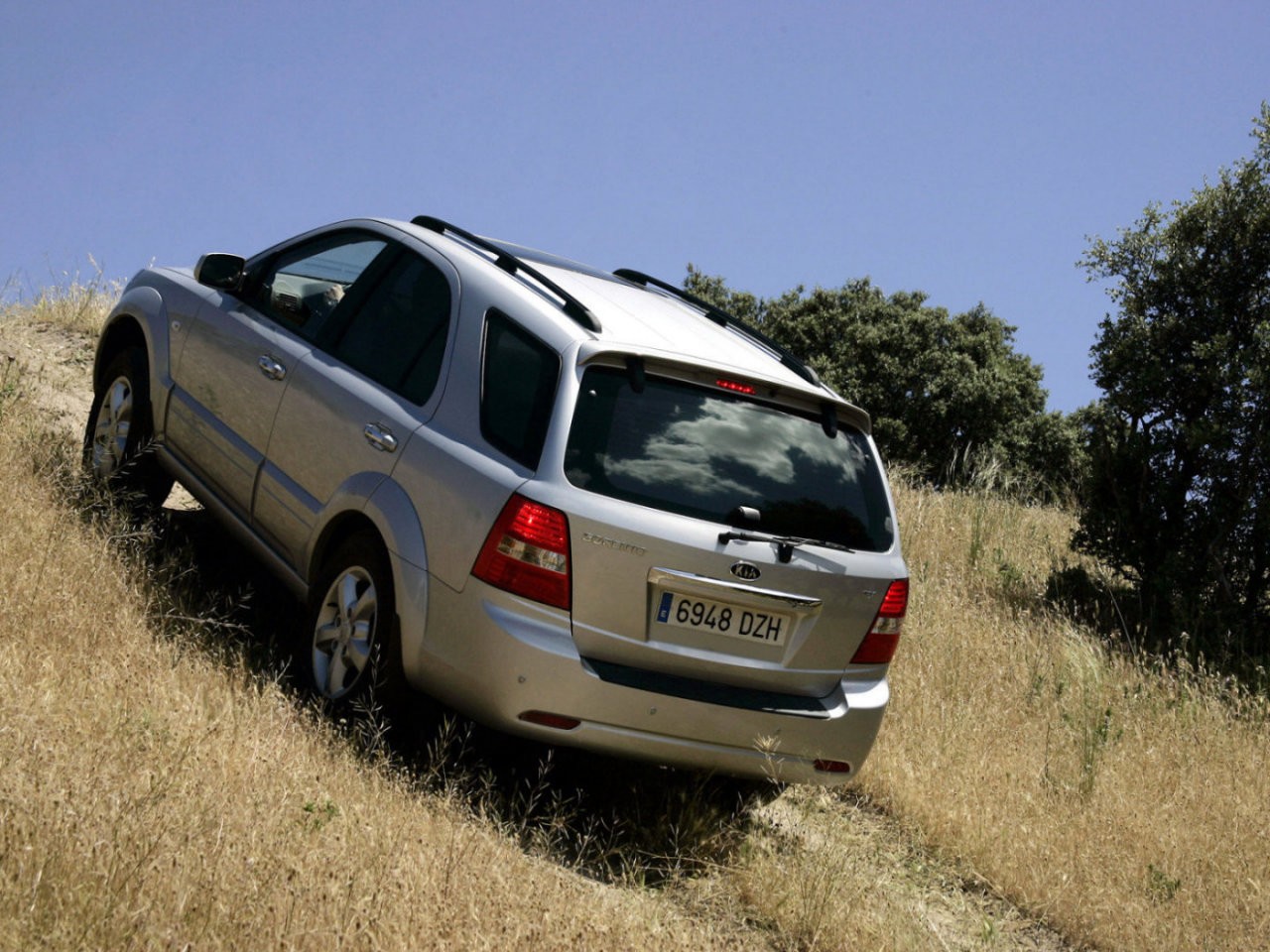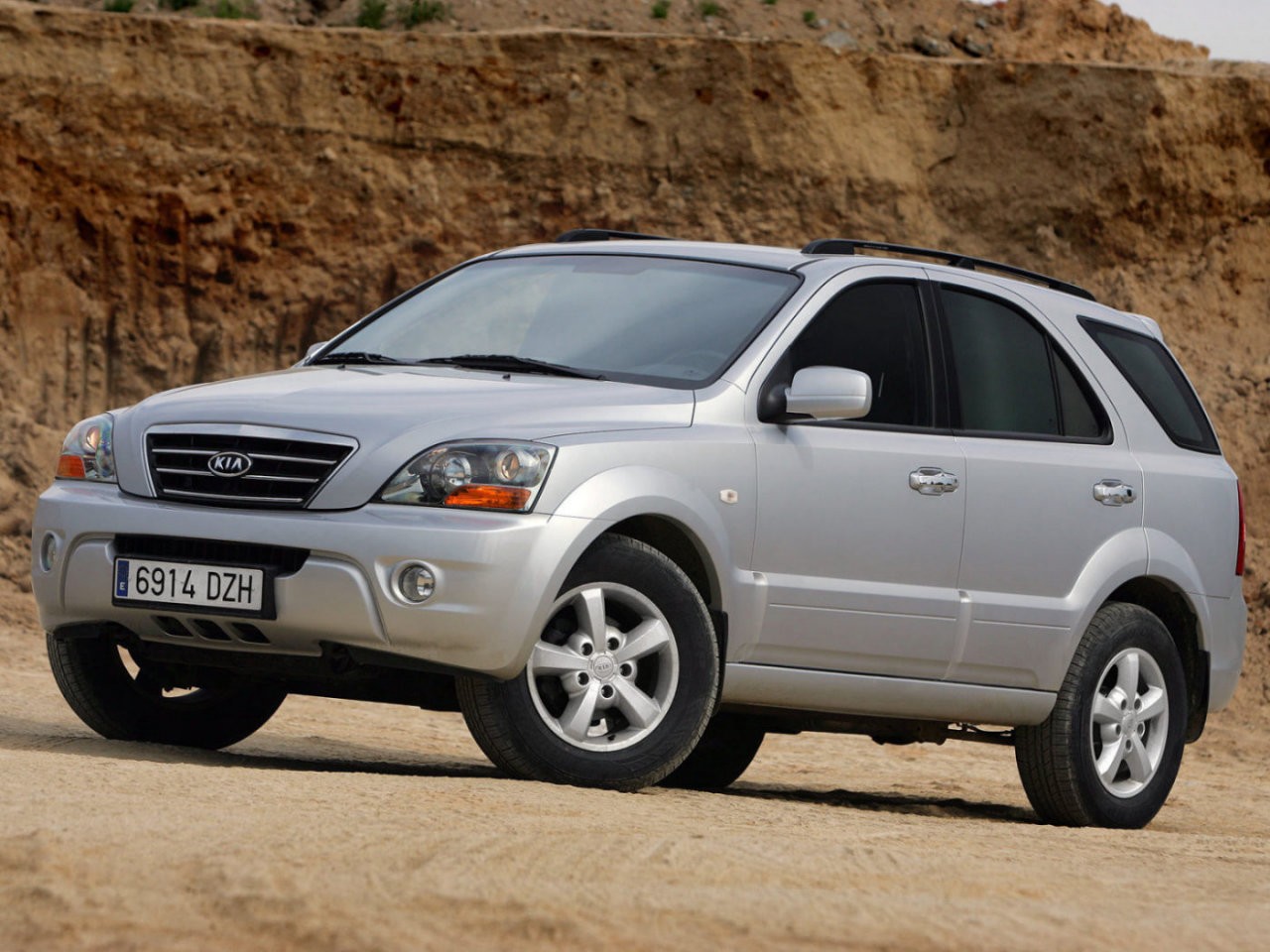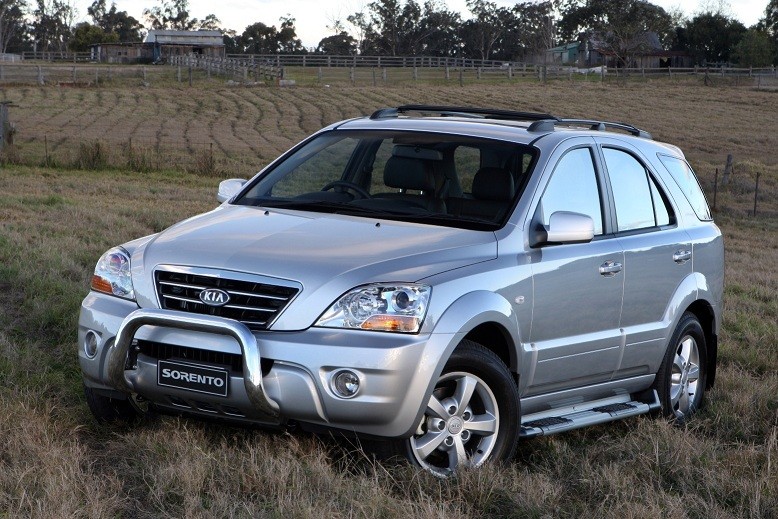
- Flexible 3.5- and 3.8-litre V6 engines
- Responsive 2.5-litre turbo-diesel engine
- Off-road capability
- Harsh, unforgiving ride; body shakes and flexes over bumps
- Suspension lacks body control
- Vague steering
- Centre rear seat has lap-only belt
Review: Kia BL.I Sorento (2003-07)
Overview
Released in February 2003, the Kia BL Series I (BL.I) Sorento was a five-seat 4WD wagon. Manufactured in Hwasung, South Korea, the BL.I Sorento was powered by a 3.5-litre V6 petrol engine that was initially available with either a four-speed automatic or five-speed manual transmission. In October 2004, however, the four-speed auto was replaced with a five-speed unit.
G6AU V6 engine
Shared with the Hyundai HP Terracan , the 3.5-litre G6AU ‘Sigma’ V6 petrol engine had a cast iron engine block, aluminium cylinder heads, double overhead camshafts (per cylinder bank), forged steel connecting rods, four valves per cylinder and a compression ratio of 10.0:1.
Dimensions
With its ladder-frame chassis, The BL Sorento was 4565 mm long, 1865 mm wide, 1725 mm tall and had a 2710 mm long wheelbase.
Suspension and steering
The BL Sorento had double wishbone front and five-link rear suspension (both with coil springs, gas-filled dampers and anti-roll bars). Furthermore, the Sorento was also fitted with speed-sensitive rack and pinion steering.
| Engine | Trans. | Years | Peak power | Peak torque |
|---|---|---|---|---|
| 3.5-litre petrol V6 | 4sp auto, 5sp man. |
2003-04 | 145 kW at 5500 rpm | 295 Nm at 3000 rpm |
| 5sp auto, 5sp man. |
2004-07 |
4WD system
The permanent four-wheel drive system enabled the driver to select from three drive modes – Two-Wheel Drive, Four-High and Four-Low – which could be engaged ‘on the fly’.
Safety equipment
Standard safety equipment for the BL.I Sorento included dual front airbags, ABS and front seatbelts with pretensioners and load limiters.
Euro NCAP crash testing
In Euro NCAP crash testing , a BL Sorento with a 2.5-litre turbo-diesel engine – and fitted with dual front airbags – received a four star adult occupant protection rating with a score of 24.52. In the frontal offset crash test, the safety cell was badly damaged and the driver’s head struck the steering wheel and protection from serious leg injury was marginal for the front occupants. Furthermore, there was substantial deformation in the footwell and at the base of the front door pillar.
Features
Standard features for the BL.I Sorento included 16-inch alloy wheels, an eight speaker sound system with CD player, air conditioning, cruise control, 60/40 split and folding rear seats, remote central locking, power windows and heated mirrors, a tilt adjustable steering wheel, tinted windows, three 12 volt power outlets, a rear cargo blind, roof racks and an immobiliser.
2004 Australian Open Sorento
In February 2004, a limited-run Australian Open variant was released. Compared to the standard Sorento, features for the Australian Open variant were extended to include climate control air conditioning, leather upholstery, a powered sunroof and woodgrain interior trim.
Review: Kia BL.II Sorento (2006-07)
Overview
Released in November 2006, the BL Series II (BL.II) Sorento introduced 3.8-litre V6 petrol engines and subtle cosmetic updates. The 3.8-litre G6DA ‘Lambda’ V6 petrol engine had an aluminium engine block and cylinder head, double overhead camshafts (per cylinder bank), four valves per cylinder, continuously variable intake valve timing (CVVT), a variable intake manifold and a compression ratio of 10.4:1.
The BL.II Sorento range initially consisted of a limited run Global Circuit edition with a standard, unnamed variant following in 2007. Visually, the BL.II Sorento could be identified by its projector beam headlights and new tail-lights. Inside, there was a revised dashboard, centre console and reshaped front seats which increased rear seat legroom.
| Engine | Years | Trans. | Peak power | Peak torque |
|---|---|---|---|---|
| 3.8-litre petrol V6 | 2006-07 | 5sp auto | 196 kW at 6000 rpm | 353 Nm at 4500 rpm |
Safety equipment
Safety equipment was improved with the introduction of active front seat head restraints.
